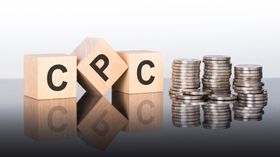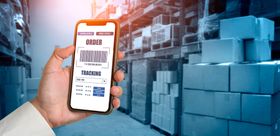How to Track and Calculate Your Profit on Amazon FBA
Updated April 28, 2023

You may be wondering what Amazon FBA is, and you are not alone. It stands for Fulfillment By Amazon, a service that helps Amazon sellers outsource their shipping requirements to Amazon.
How the Amazon FBA Calculator Works
The Amazon FBA calculator is a very handy tool for anyone who is thinking about outsourcing their shipping requirements to Amazon to avoid having to calculate your own shipping costs. It calculates how much money you will make selling your products through Amazon's logistical network. It goes without saying that you need to have a clear understanding of the costs involved in running your e-commerce store, and shipping is an important aspect of those costs. Just make sure you know what mistakes to avoid when calculating profit.
Also, take note that each of marketplace has its own revenue calculator, including Australia, Canada, China, USA, UK, and various European and South American countries.
» Learn more about Amazon FBA profit calculators
Amazon FBA Profit and Loss Spreadsheet
Amazon FBA has a few handy tricks up its sleeve—one of them being its profit and loss spreadsheet. Make no mistake, the spreadsheet can be tricky if you don't manage it well; however, it can be managed better if it is all incorporated into an analytical dashboard.
How to Use the Amazon FBA Calculator
The Amazon FBA calculator is a relatively straightforward tool, designed to show potential sellers how much they can expect to spend on fulfillment, and how much profit they can make. To get started, you’ll need to log into your Amazon account and enter your Seller profile. Click on the Amazon FBA Calculator, or visit this link if you’re having problems.
Step 1: Find the Relevant Product
Firstly, you must input an “identifier” number to find the product you’re researching. You can use a search term, ISBN, EAN, or ASIN, depending on the information you have, and select a specific location for your search.
Step 2: Set the Price
Next, you can input values into the fields within the “Amazon Fulfillment” space to figure out a margin for the product. The first value to enter is the price of the item. Research similar products for inspiration and play around with the pricing to see what kind of margin you can achieve when raising or lowering the price.
Step 3: Determine Shipping Costs
Fill in the “Ship to Amazon” field. If you’re already selling products via Amazon, you should have a good sense of what the average unit price is to ship your items to the Amazon warehouse. This number varies based on the size, weight, and quantity of products being shipped. Again, experiment with a range of costs to see how it impacts the margin.
Step 4: Determine Product Cost
Complete the “Cost of Product” field. This is where you input the price it costs to purchase your product from a wholesaler or manufacturer. Make sure you use the “all-in” cost, including the price for any overseas shipping, packaging materials, customs, and any extra expenses related to purchasing your items.
Step 5: Calculate Your Margins
Click the “Calculate” button. From here, the calculator will give you a net profit and net margin for the product as well as your selling on Amazon fees and fulfillment costs.
Other Ways to Calculate Profit on Amazon FBA
Amazon FBA Profit Margin Calculator
This calculator gives a broader view because you can include all your expenses to get to your net profit per unit. To use this calculator, you start by entering some basic information as well as your fixed costs and upfront costs per product. Your job is to replace the red information in the table provided with your own information. You don't need to do anything with the green figures; those are formulas. Just enter "0" if something doesn't apply to your business.
The next step is to enter your marketing costs under "advertising" and "promotions and giveaways," but only if you have marketing costs. And finally, enter "calculate," and you'll get your gross margin calculations.
Amazon Profit and Loss Dashboard
You can also give the BeProfit profit tracker tool a try. BeProfit offers one of the most accurate profit calculators available on the market today. It includes a data analytics dashboard specifically developed for e-commerce businesses. This innovative tool helps you to stay on top of your business finances while optimizing your bottom line. It is easy to navigate and can be a trusted partner that supports you through the highs and lows of your business's journey.
FBA is a service offered to businesses that helps them grow by using Amazon's extensive logistics network. It's quite simple in practice—businesses send their products to an Amazon fulfillment center. Once the products are at the center, and a customer buys one, Amazon receives, packs, and ships those orders, while taking care of customer service, returns, and refunds.
This isn't the only way to fulfill your e-commerce orders with Amazon—read our Amazon FBA vs FBM post and our dropshipping on Amazon for beginners guide to learn more.
Calculate Your Amazon FBA Fees
Before you start your business and throughout your product's lifecycle, your very first step is to consider all your costs. There are four main categories of costs that you would need to look into on Amazon:
- Upfront costs You'll need samples, and you'll need to ship those samples.
- Variable costs This includes your FBA fees (15% of your product's price plus $3 to handle and ship your product), returns, and storage fees.
- Marketing costs You'll have to launch your products at some point and then promote them on an ongoing basis.
- Business costs This includes insurance, taxes, salaries, and wages. These costs largely depend on the product(s) you are selling.
All these costs will impact your profits. To offer your customers a product that is value for money, you need to finetune your expenses and sharpen your calculations to find the perfect match between your profit margins and your customer's pocket. Additionally, you'll need an Amazon profit calculator.
Struggling to optimize your spending? Read our guide to using Amazon advertising reports to help you do so.
» Find the best Amazon FBA calculator
Is Amazon FBA Profitable?
The short answer to this question is yes. The long answer to this question takes a couple of statistics into account. Firstly, did you know that Amazon’s revenue was $386 billion in 2020? That's quite a leap from $280 billion in 2019. Almost half (54%) of this revenue comes from third-party sellers! But that's not all. A total of 92% of those third-party sellers use Amazon FBA.
The bottom line is that the demand for online shopping has increased significantly since the onset of COVID-19. People are feeling more comfortable with online shopping and are, therefore, exploring different online shopping avenues. To drive the point home, 62% of online shoppers start their search for the products they want to buy on Amazon. If that doesn't convince you, nothing will!
And once you get started, be sure to take a look at our guide to promoting your Amazon products.







